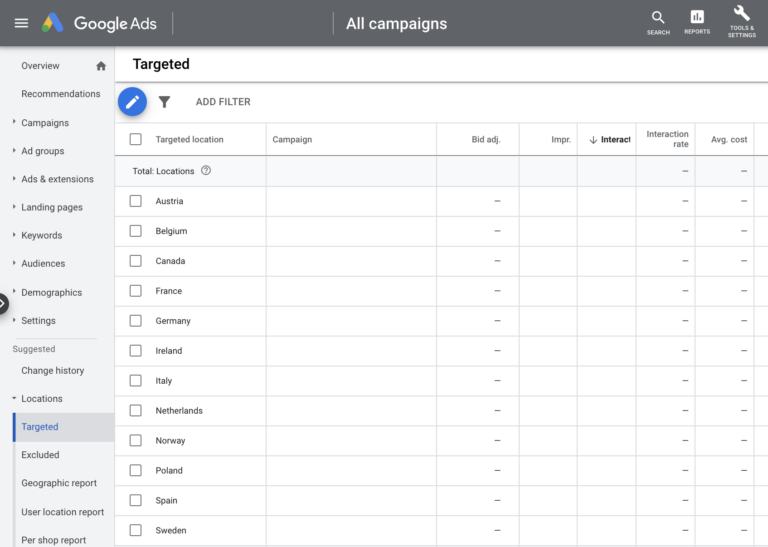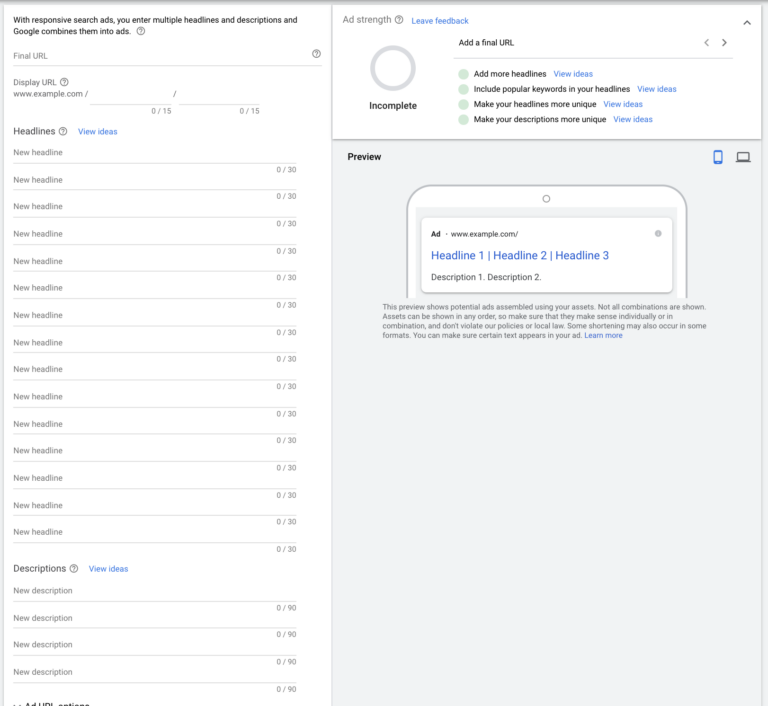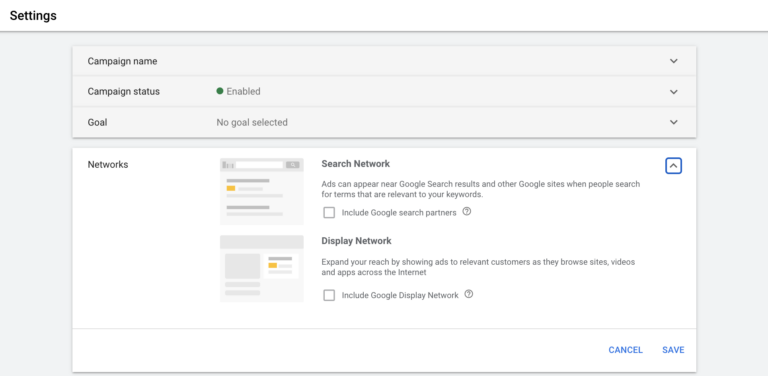
Abby Webb
Head of Search & Content
Abby heads up our SEO and content campaigns, with a strong background in copywriting, content and paid search marketing.

Here are the most common PPC mistakes to avoid, with tips on how to improve your ad copy, your landing page experience, your Quality Score, your Ad Rank and your clickthrough rate.
Frustrated with the performance of your Google Ads account recently? You’re not alone. At their best, Google Ads have the power to provide a consistent stream of leads for your business, at a much lower cost than other forms of advertising. But, when they’re not set up correctly, they can be a costly exercise with little reward.
So, how do you improve your Google Ads performance? In this article, we have rounded up the most common PPC mistakes to avoid, with tips on how to improve your ad copy, your landing page experience, your Quality Score, your Ad Rank and your clickthrough rate.
A successful PPC campaign starts with the right campaign structure. We often find that when campaigns are poorly structured, their performance is limited from the start. Depending on the range of services you provide, and the locations you serve, you may need to have more (or even fewer) campaigns than you first expected.
As a rule of thumb, you want to make sure you create separate campaigns for each of your offices – if they are serving totally different demographics – and separate campaigns for the different services you provide.
For example, if you were a law firm, you might want to have one campaign dedicated to “Business Law” – inside which you can create ad groups for more specific services like “Employment Law” and “Business Agreements” – and another campaign for “Family Law” – inside which you can create ad groups like “Adoption” and “Divorce”.
Also, if you currently have two very similar campaigns, you might find the ads and keywords within them will perform better if they are consolidated into one larger campaign. Simply copy and paste from one campaign to another and pause the one you’re no longer using.
This structure will help Google allocate your budget across all your ad groups better, and it will give you more control over where your ads will be shown, as many of these settings are looked after at the campaign level.
Have you ever checked into your Google Ads dashboard to see that you’ve already spent your day’s budget – and it’s not even lunchtime? This can happen for many reasons, particularly if you have a small budget and are bidding on expensive keywords.
To help manage your budget more effectively across the day, we recommend introducing an ad schedule to your campaigns as you could be wasting your budget on low-intent 3am clicks.
Create your ad structure around your business’s opening hours. If your business is open Monday-Friday only, then you might even want to stop your ads from showing at the weekend altogether.
To do this, go to the menu at the left of your ads account, and find ‘Ad schedule’. Click the blue pencil icon, select the campaign you would like to add a schedule to, then use the dropdown menus to choose which days and times you’d like your ads to appear.

By default, your campaigns are likely to be set to display across the United Kingdom. That means that your ads could show up for users searching for the keywords you’re bidding on across the country.
If you’re set up to service the entire UK, then this is no problem, but the focus for many businesses is the local radius around their office.
So, to help focus your ads on the areas that are important to you, you will want to structure your account so you have one campaign per office (if you have multiple offices), then set your location targeting to a radius around your office address.
To do this, go to the menu at the left of your ads account, find ‘Locations’ then hit ‘Targeted’. Click the blue pencil icon, select the campaign, then start typing the locations you want to target, or choose a certain mile radius around your postcode. You can also set your location targeting by going into the settings for each campaign.

To make your location targeting more effective, you can go into your ‘Location options’ once you’re in your campaign settings and choose the ‘Presence: People in or regularly in your targeted locations’ option. You can exclude irrelevant areas here too.
The search results page is a busy, confusing place. To help your ads stand out here, you want to make sure your copy is actionable. It needs to encourage the reader to click and take action.
Including a call to action in your headlines is the first step. Make it clear through your headline copy that you want your searchers to take the next step – whether that’s to ‘call us’ or ‘get in touch’ or even ‘make an enquiry’. The key is to start your phrase with an imperative verb, which will encourage the searcher to act.
Your Quality Score is a great indicator of whether your ads are working well, and what you need to do to improve them, because higher quality ads lead to lower prices and better ad positions.
If you find that your keywords have an “Average” or “Above Average” Landing Page Experience, but your Ad Relevance is “Below Average”, then take time to review your ad copy and see if they include your lower performing keywords.
When reviewing your ad copy, you want to make sure all your ads – and particularly your headlines – include your important keywords that you’re bidding on, as this will directly affect the relevance of your ad for your ideal customer. Rewrite your headlines to make specific references to those lower performing keywords as a starting point. Take a look at your landing page for ideas on how to incorporate these keywords into your ad copy too.
Make sure your ad is easy for your ideal customers to read. As well as reviewing your ad copy and correcting any spelling mistakes, you should take a look at which case you’re writing your ads in.
You can choose to write your ads in Title Case, which is where you capitalise the first letter in the first word and the first letter of your important words in your ad copy like this: “Family Law Solicitors in Maidstone, Helping you Solve your Case”.
Or, you can write in Sentence case, where you only capitalise the first letter of your first word and proper nouns, like this: “Family law solicitors in Maidstone, helping you solve your case.”
Or, you may choose to use both. For example, you can write your headlines and extensions in Title Case, and your descriptions in Sentence case.
Whatever case you choose, ensure you use them in the same style throughout all your ads for consistency, otherwise your ads can appear more difficult and less engaging to read.
Recently, Google has been encouraging advertisers to try their responsive search ads. In fact, as of 18th February, responsive search ads have become the default ad type that you can create in Google Ads. With responsive search ads, you can create an ad that adapts to show more text – and more relevant messages – to your potential customers. When you set them up, you’ll enter multiple headlines and descriptions and Google Ads will automatically test different combinations and learn which combinations perform best.
The most common mistake we see with responsive search ads is that the multiple headlines and descriptions supplied are often very similar to each other. This can result in ad copy combinations that really don’t make the most of the valuable ad space that’s available, as the same message is repeated.
So, when entering your headlines (you have up to 15) and descriptions (you have up to 4), make sure you’re including a broad variety of phrases to avoid repetition. And make use of all the headlines and description lines available to you – the more content you provide, the more Google can test!

A great way to get enquiries when running ads is to try call ads. These ads are designed to encourage people to call your business, and can appear only on mobile devices. When a potential customer clicks your ad, the ad directly places a call to you from their device. This bypasses your contact form and your landing page altogether, so it makes it really easy for your potential customer to get in touch with you straight away!
Introduce a call ad into each of your ad groups to test their effectiveness and see how they can improve your conversions.
Between the headlines and descriptions, you only have 270 characters to use across your ad copy. That’s 10 fewer characters than a tweet! That’s where ad extensions can really help. Shown around your main ad, ad extensions support your main messaging in your ad copy, and provide you with even more room to get your services and expertise across.
Google’s research has shown that ads with extensions perform better than those that don’t. This makes sense – the more content you add to your ad, the more real estate your ad takes up on the results page, and the more opportunities you give your potential client to get in touch with you.
There are a wide range of extensions to use, including call buttons, callouts, location information and sitelinks – where you can link to other pages on your website.
Make the most of the space made available to you in ads by providing details for all types of ad extension. If you’re worried that will make your ad look really busy, don’t worry. Google won’t try to display them all at once. Instead, it will choose the most relevant extensions to show in response to the specific search term. With this in mind, make sure your most important copy remains in your ad headline and description. Use your extensions to reinforce your main messaging and offer other ways of getting in touch with you.
In the keyword section of Google Ads, you can get helpful insights into the performance of your landing pages. Go to modify the columns of results available to you and add “Quality Score”, “Landing Page Experience” and “All Conversions”.
These three metrics will provide valuable details into how well your landing page is working. If your Quality Score is below 5/10, your Landing Page Experience is “Below Average” or you have few conversions, then you’ll want to head over to the landing page(s) in question and check out what could be making it difficult for your potential clients to convert.
First up, take a look at your contact form. If you don’t have one on your landing page, then your main priority is to speak to your web developer and have a form added, then tracked as a conversion in your Google Analytics and Google Ads accounts.
If you do have a contact form, then review its location on the landing page. Often, we find that the contact form is positioned in a small column, rather than in the main body of the page – somewhere that can easily get missed. On mobile, you often have to scroll down right to the bottom to locate the contact form. If your visitor doesn’t scroll all the way down, you’ve missed an opportunity to convert them.
Next, you’ll want to check what information you’re asking for in your contact form. Too many fields at this stage and it’s likely that you’re putting your potential client off from filling it out. Make it as simple as possible with the bare minimum – name, email address and phone number. You can ask for more details when you contact them.
We’ve also seen many instances where a firm’s phone number is prominently displayed on the landing page, but it can’t be clicked on to start a call. To make the most of your phone number, ask your web developer to turn it into a clickable link. You can then also turn this into a conversion to track through your Google Ads.
Lastly, make sure the landing page works on mobile as well as desktop – you’ll often find that your customers will be searching for help on their phones!
TL;DR: review your landing pages and move things around if needed, so it’s really easy for your potential customers to find your contact information and get in touch. Check out the 8 must-haves for a high converting landing page for more tips on landing page optimisation.
For the best return on your ad spend, we recommend having a dedicated landing page for each service you’re promoting. The more relevant the content on this page to your ad copy and your keywords, the better your ads will perform – and they could even get cheaper to run too!
We often see businesses using their existing service or product pages as landing pages for their ads. While this is much better than sending users to their homepage, we recommend creating bespoke landing pages that are only accessible from your Google Ads.
This is because service and product pages are designed with SEO in mind to help the page rank well in Google’s organic search results. While there’s plenty of content on these pages, there’s also lots of distraction from the main aims of getting an enquiry.
Instead, you should always aim to create a clutter-free, easy to use landing page that contains just the information that your potential customer needs at that moment to convert. On each landing page, you’ll want to include a contact form, copy that explains the service you provide and how your firm is best placed to help, then social proof in the forms of testimonials or external reviews (plugins from TrustPilot, Feefo or Google are ideal).
Quality Score is an estimate of the quality of your ads, keywords and landing pages, reported on a scale of 1-10. It’s an important metric to look at, because the better the quality score, the better your ad position. It can even lower your cost per click!
To increase your Quality Score, we recommend revising which keywords you are currently bidding on and ensuring they are featured in your ad copy and landing page. Speaking of landing pages, you’ll ideally want to create bespoke landing pages for all the services you’re promoting, so the information on those pages are directly relevant to the ads and keywords.
The more focussed you can be with your keywords, the better and more relevant your ad copy and landing pages can be. That’s why we recommend between 5-10 keywords per ad group.
We’ve seen ad groups with hundreds of enabled keywords in them, with most of the keywords having zero impressions or clicks on them. There are usually duplicate or near-duplicate keywords in these larger ad groups too, which will impact the performance of your ads.
If your ad group has a large number of keywords, make it your priority to review and see if you can split these up into smaller ad groups. Keywords with low search volume can be paused or removed. Similar keywords can also be paused – including plural or variations of word order – which will help reduce the number of keywords in total.
There are 3 types of keywords you can use in Google Ads:
With all these types of keywords available to use, it can be difficult to choose one to work with. Google’s latest recommendation is to use broad match keywords if you’re using a Smart Bidding strategy like Maximise Clicks or Maximise Conversions. Their view is that a broad match keywords could match to relevant queries from your clients that you hadn’t even thought of – and the Smart Bidding strategy will use its learnings on your account so far to set the right bid amount for these queries, so you don’t pay too much for these terms.
But, if you’re cautious using broad match, then test phrase match, which has incorporated the retired broad match modifier’s ability to respect the word order within your keywords when it’s important to its meaning.
Our advice is to avoid using exact match keywords where possible, as our experience has shown that these terms can really limit the reach of your ads. Remember to make use of negative keywords to help eliminate irrelevant searches too!
Negative keywords are a helpful way of stopping your ads from showing up to irrelevant searches. Here are a couple of tips to make them work even better:
If you have exact match negative keywords, consider changing them to broad match, as exact match negative keywords can often only limit really obscure searches. Broad match will help capture and stop your ads displaying on even more irrelevant searches.
Also consider adding terms like “free” and “jobs” to your account’s negative keyword list, as these types of searches are really common yet often irrelevant.
Likewise, if you have a limited budget, you should also consider adding question-based broad match keywords like “how to” and “can I”, as these suggest that the searcher’s intent is to find a DIY solution, rather than find professional help.
“Low search volume” is a status given to a keyword that has very little to no search history on Google. This means that no ads will display for that keyword until the search volume increases.
We often find that keywords for local businesses have low search volume because they include the location of their office in the keyword.
If you notice that the keywords with locations included in them aren’t performing well, we recommend removing the location in your keyword (e.g. “accountants” rather than “accountants Essex”) and rely on your location targeting settings in your campaign instead, as your location targeting settings – once correctly set up – will mean that your ads can only display in the areas you want them to.
The first thing to check in this case is where your ads are being displayed. To do this, go to your campaign settings, then expand on the ‘Network’ section. Here you’ll see if your ads are running on the Display Network and if Google’s search network partners are being included.

If they are, then our recommendation is to untick these boxes and run your ads on Google Search only. In our experience, running local business ads across Search partners and Display Network often result in few, if any, conversions, but are responsible for a high number of impressions. Stop running your ads here and you should see an improvement to your conversion rate. You’ll have fewer impressions on your ads compared to previous months, and your average cost per click could rise, but your ads will be seen by people who are much more likely to make an enquiry.
While at first glance, a low average CPC can look great, it might actually mean that your campaigns have a reduced reach. This is especially true if your ads aren’t resulting in many conversions.
For local businesses, we often find that a low CPC indicates that your budget may be far too small to run effectively, which means your ads rarely appear. When they do, they are likely in an unfavourable position, like the bottom of the page or even page two of the search results.
When budgeting for your advertising spend, be sure to consider the industry average cost per click, as this will help you choose a budget that will provide better ad positions and higher quality leads.
Here are my quick tips on improving your PPC campaign:
If these tips feel a bit overwhelming, or you just don’t have time to make these updates to your account, it could be time to outsource your Google Ads efforts to the experts. We can help make your Google Ad campaigns work for your business, alongside your other marketing efforts. Our Search team have extensive experience running successful ad campaigns for clients across a range of sectors, and have the skills to transform your account from costly to converting.
Originally posted: 15th January 2021
Updated: 20th May 2022

Head of Search & Content
Abby heads up our SEO and content campaigns, with a strong background in copywriting, content and paid search marketing.
View my other articles and opinion pieces below
Google’s AI search demands higher standards for YMYL content. Learn how to keep your financial, legal or health advice visible, trusted and compliant.

At Google Marketing Live 2025, the focus was clear: AI is already changing the way people search, and as a result, it’s changing what brands need to do to show up in search results. Here’s what you need to know – and what it means for your marketing.

Love it or hate it, everyone’s seen it. Google’s AI Overviews are changing the way your search results appear. Now, AI-generated summaries will often answer user questions before the usual list of site links we’ve come to expect. In fact, 47% of Google Search results now include an AI Overview – at least, according to AI […]

This short guide will teach you how to track your marketing campaigns using UTM parameters. Also referred to as a custom URL, a UTM tag is a customised snippet of text (called a parameter) that is added at the end of a website address. This UTM tag allows you to track and identify the traffic […]
